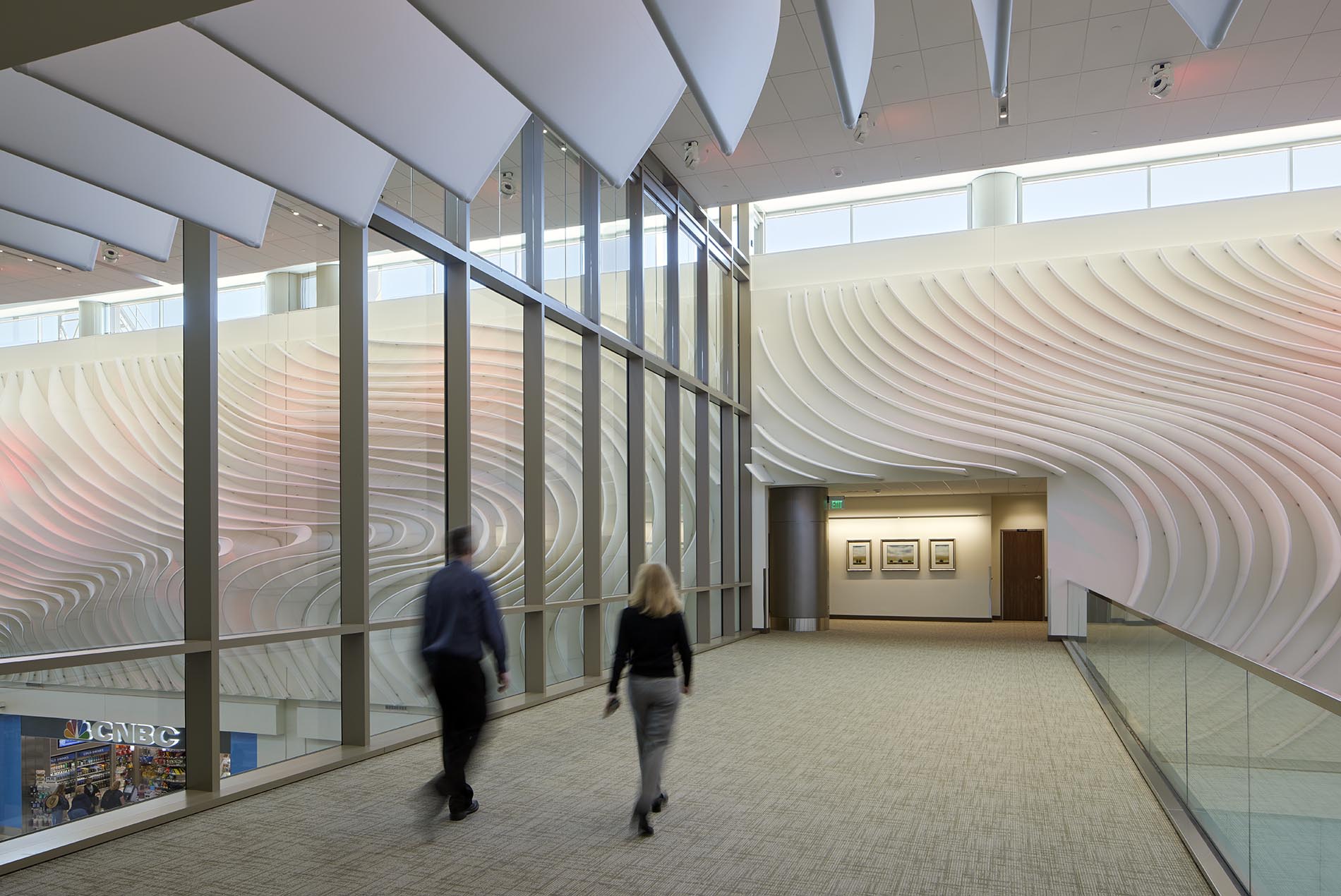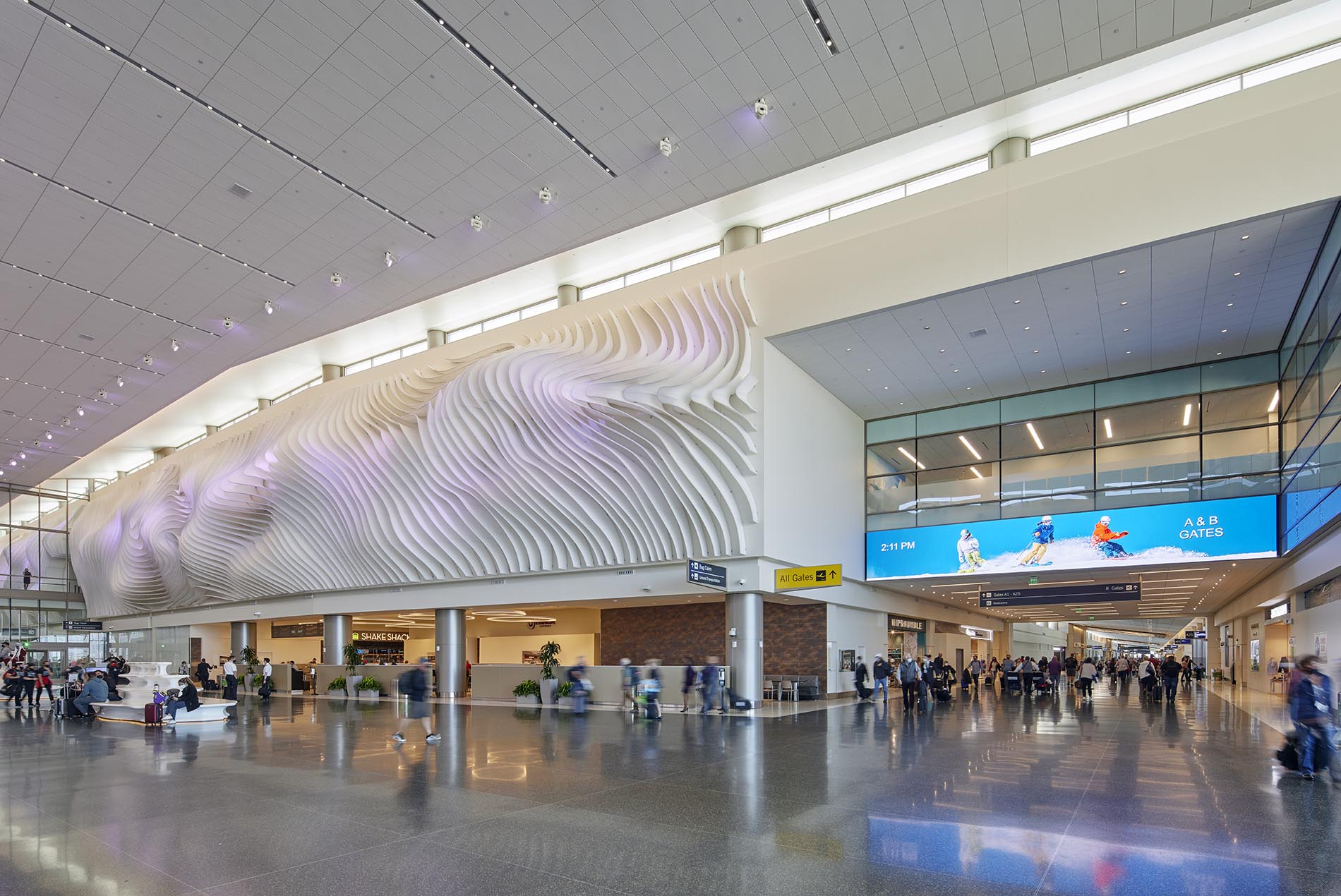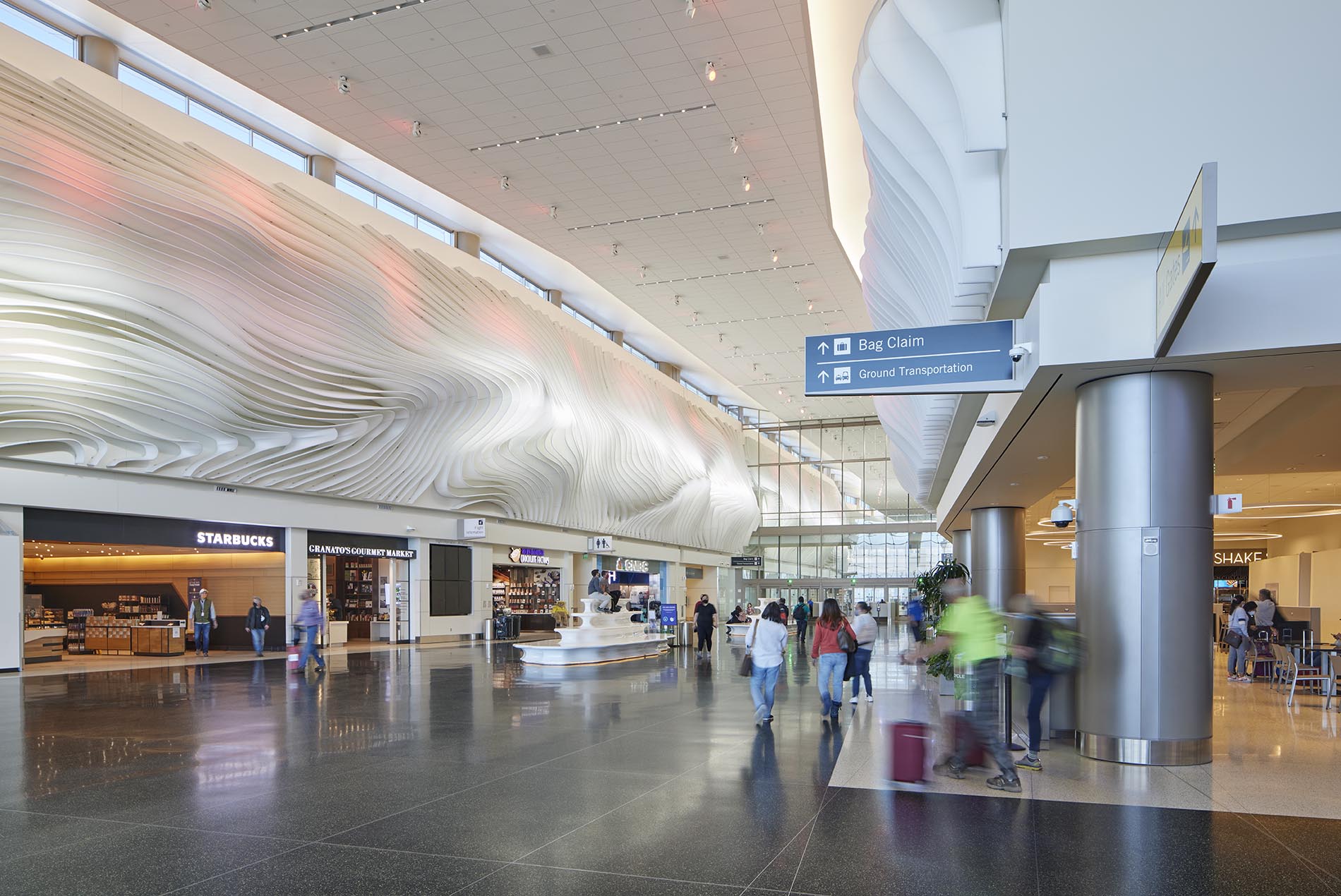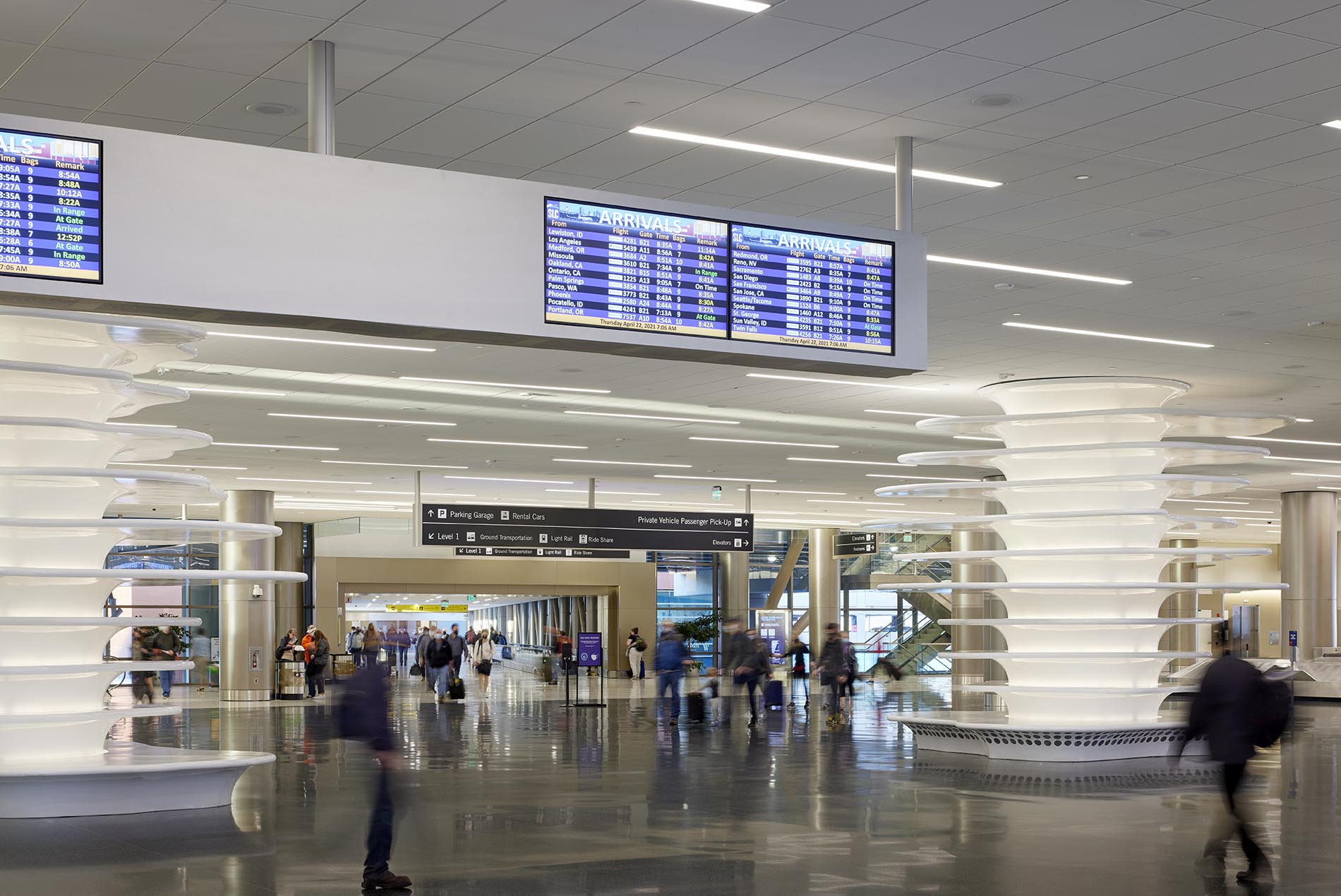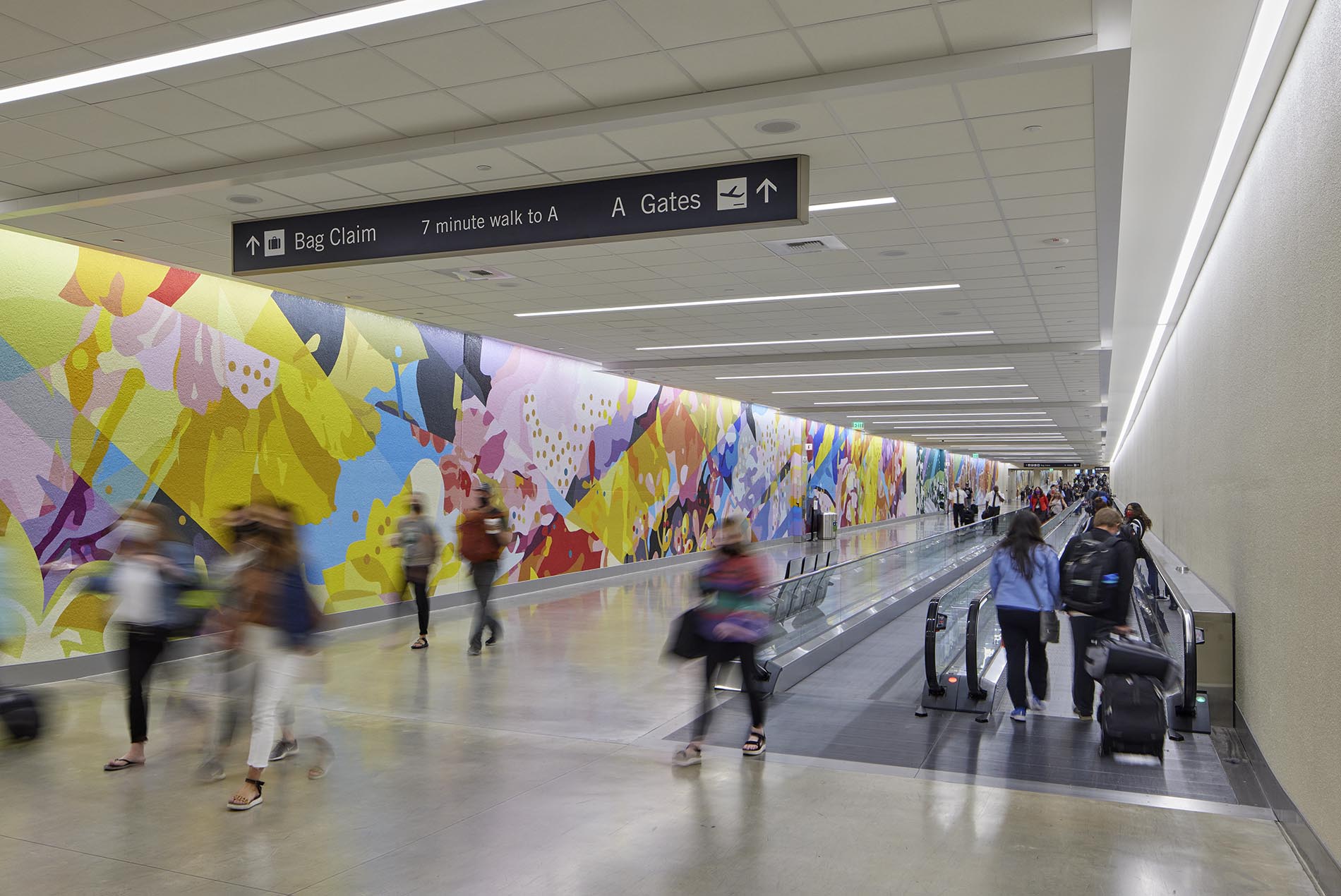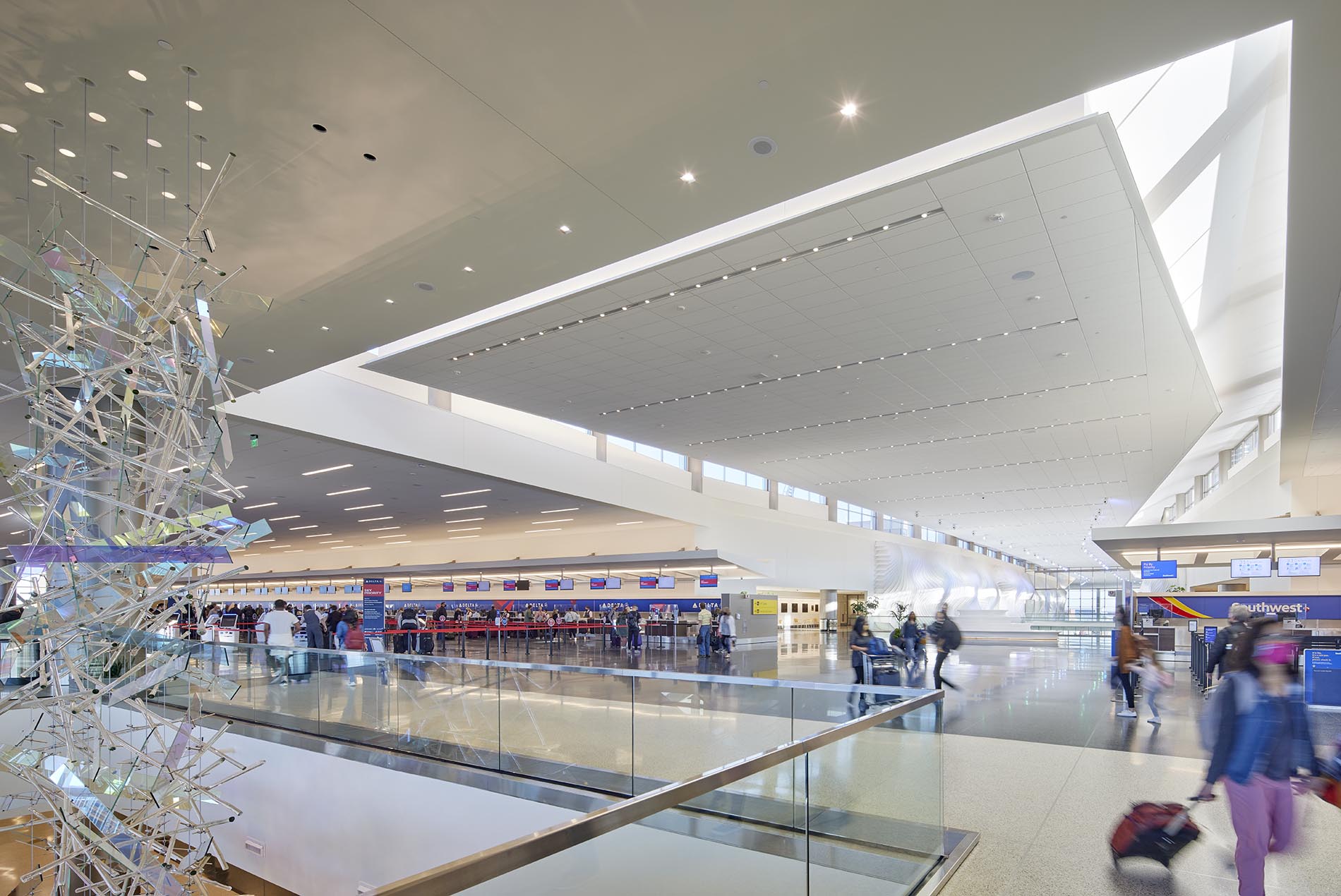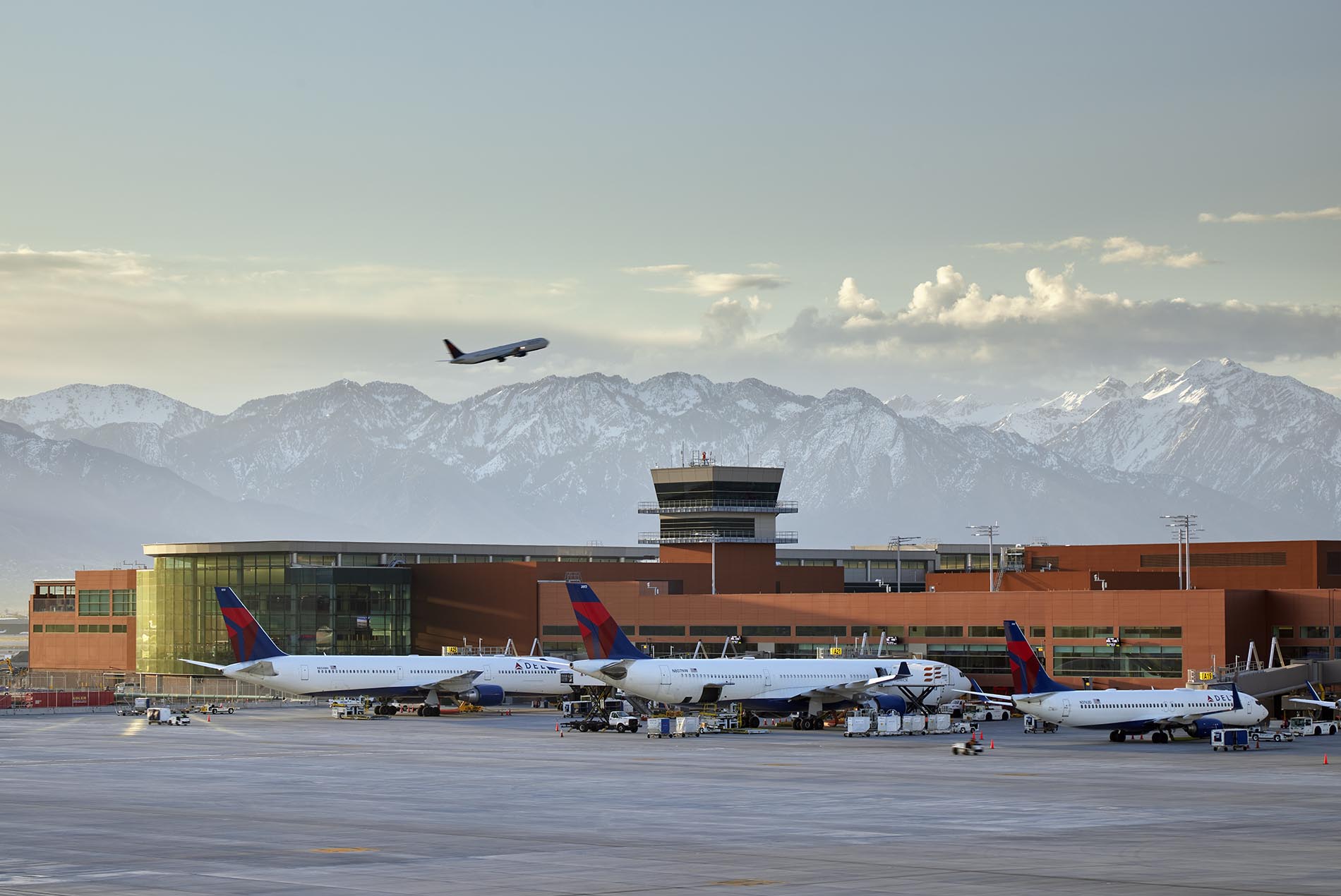Salt Lake City needed to replace three aging terminals from the 1950s and 1960s with a facility that could handle growing passenger volumes while improving efficiency and celebrating the region’s identity as a gateway to outdoor recreation.
Design Solutions
Using a multiphased project approach, our design team created a 909,000-sq.-ft. central terminal on the same site as the demolished structures, flanked by two linear concourses. Concourse A stretches 3,700 feet and Concourse B extends 3,400 feet, housing 45 gates in the first phase. The River Tunnel, a 1,175-foot-long underground passenger tunnel, connects the concourses.
Fifty-foot-high floor-to-ceiling glass walls draw daylight into the terminal and frame views of the airfield and Wasatch and Oquirrh Mountains. Earth-toned, naturally derived finishes on interior and exterior surfaces reinforce a sense of place, and local dining and retail options extend the Utah’s character throughout the facility. HOK’s Experience Design team created branding and wayfinding systems that guide travelers while expressing Utah’s spirit.
At the terminal’s heart, “The Canyon” spans the length of a football field and houses security screening, shopping and dining. Artist Gordon Huether’s 362-foot-long installation of more than 520 tensile membrane fins evokes Utah’s red rock canyons, alpine peaks and flowing water. A pre-security greeting room accommodates up to 400 people and features a fireplace, artwork and a world map where families can share their travels.
Twenty high-tech security screening lanes process travelers up to 30% faster than in the previous terminal. A 3,600-stall parking garage doubles the previous terminal’s capacity and uses camera-based sensors to identify open spots. Curbside bag-check kiosks streamline the move from car to terminal. Amenities like a ski drop reinforce the region’s outdoor culture, and electronic plug-ins are available at every seat in the terminal. Two Delta Sky Clubs, including the 34,000-sq.-ft. HOK-designed Club (one of the carrier’s largest), anchor the amenities.
The River Tunnel enhances the journey between the concourses with wavy sculptural elements that extend the Canyon theme and reference Utah’s rivers and streams. Calming blue lighting and a curated music playlist create an immersive experience.
Supporting multimodal travel, our plan relocated a Utah Transit Authority light rail station next to the terminal entrance, giving passengers a convenient 20-minute ride to downtown Salt Lake City. HOK designed the station canopies and related site improvements.
Achieving LEED Gold certification, the terminal minimizes its environmental impact through high-performance glazing, daylighting and energy-efficient mechanical and lighting systems. The efficient layout improves operational efficiency and reduces aircraft fuel use, emissions and taxi distances.
As master engineer, HOK designed mechanical, electrical, plumbing, structural, IT and security systems. Due to the airport’s proximity to the Wasatch Fault, the team designed the structures to withstand earthquakes. To address seismic conditions and extreme seasonal weather, the team created 29 structurally independent buildings that appear as one cohesive terminal, supporting thermal movements during temperature swings while maintaining structural integrity.
Impact
The first phase opened in 2020 and represented the largest public works project in Utah’s history and the first U.S. hub airport built in the 21st century. The $4.1 billion facility replaced outdated terminals with a more efficient, traveler-focused operation. “We’re changing the entire physical model of the airport,” said Executive Director Bill Wyatt. “The new terminal is so much more efficient for aircraft and passengers … it’s just a stunningly beautiful and functional facility.”
Working with construction managers HDJV and AOJV, the team found economies of scale in design, specification and construction. The slowdown in air travel due to the COVID-19 pandemic allowed the team to accelerate completion of the second phase by six months, saving millions of dollars.
Phase two ended in 2023 with the demolition of existing structures and completion of the east portion of Concourse A. Phase three, centered on the River Tunnel, opened in fall 2024. Ten additional gates opened in October 2025 as part of phase four, with the remaining gates and a bus operation scheduled to open in October 2026. When complete, the airport will offer 94 gates.
With capacity for 34 million passengers per year, the airport positions Salt Lake City for economic growth as a destination for tourism and business. A 2024 economic impact analysis noted that the project will generate almost $9.8 billion in economic benefit and support more than 4,000 jobs.
The project received an Award of Excellence from the Structural Engineers Association of Northern California, ENR Mountain States Best Airport/Transit and Project of the Year in and CCIM Utah Transformative Development of the Year.



